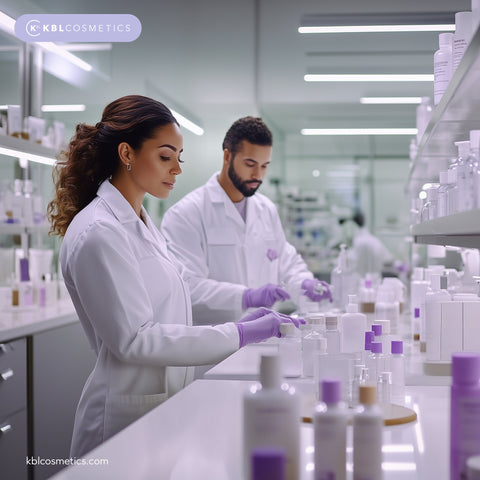Consumers with hypersensitive skin or a history of contact dermatitis or allergic rash look for hypoallergenic products to minimize adverse skin reactions. These consumer groups consider patch test results and product label details before buying hypoallergenic cosmetics, makeup, toner, facial cleanser, moisturizer, or natural makeup.
Common problematic cosmetic ingredients
Manufacturers often avoid certain cosmetic ingredients in dermatologic formulations to reduce allergenicity. These include:
- Fragrance molecules and artificial fragrances
- Irritating waxes and chemical filters that can disrupt the stratum corneum
- Some preservatives like sorbic acid and sodium hydroxide
- Coconut oil and peel oil that can act as cross reactants in sensitive individuals
- Metal compounds sometimes used in loose powder mineral foundation or compact foundation
Gentler emollients and emulsion systems
Instead, hypoallergenic cosmetics may include mild emollients like cetearyl octanoate, dicaprylyl ether, and caprylic / capric triglyceride. They may employ a water-in-oil (W/O) emulsion base to improve hydration effect and enhance distribution / spreading and the feeling on the skin.
Role of mineral makeup and UV protection
Mineral makeup formulas—such as zinc oxide and titanium dioxide in mineral pencil eyeliners, creamy baked mineral eyeshadow trios, or loose powder mineral foundation—offer broad spectrum sun protection against UV radiation and UV rays. Hypoallergenic makeup options like intense coverage liquid foundation mousse or redness concealer cream rely on these inert mineral UV shields rather than chemical filters.
Specialty ingredients and acne concerns
Some hypoallergenic facial cleanser and hypoallergenic toner formulations include salicylic acid or azelaic acid to address acne-prone or oily shine skin without triggering allergic reactions. Meanwhile, Undaria pinnatifida extracts may be used for hydration effect in sensitive formulations.
Testing, regulations, and certification
The Food and Drug Administration and pharma engineers monitor cosmetic safety through allergenicity testing, product comparison tests, and rating systems like the VH-Rating System. Brands may highlight antibacterial products or hypoallergenic formulations, but compliance with regulatory standards ensures cosmetic safety.
Choosing the right hypoallergenic makeup and skincare
When selecting hypoallergenic natural makeup or skincare, consider:
1. Patch test first, especially with new items like a corrective concealer fluid makeup or compact powders
2. Check for absence of citrus reticulata extracts known to sensitize
3. Verify inclusion of mineral UV filters like zinc oxide or titanium dioxide
4. Look for dermatologist-tested claims and hypoallergenic toner or moisturizer seals
5. Avoid advertising slogans that focus on intense coverage without clarity on safety or cross reactants
Hypoallergenic eyeshadows and concealers are designed to deliver color with less risk of irritation. Ingredients are selected for safety rather than aesthetic effect alone.
For more information on selecting safe formulations for sensitive or hypersensitive skin, or to explore options in dermatological skin care formulations, please contact us to get started with our services.
